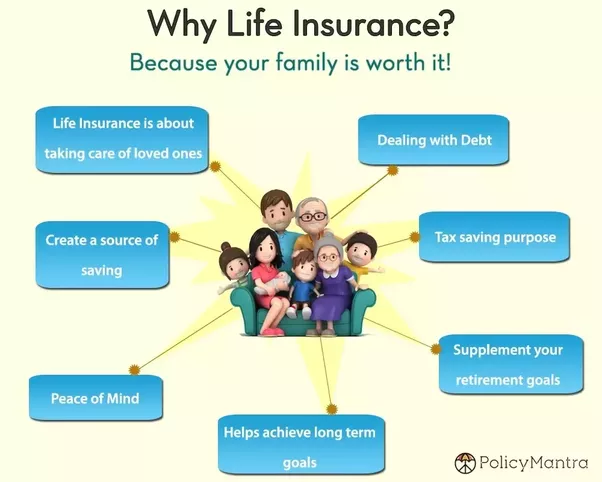Rumored Buzz on Pacific Prime
Rumored Buzz on Pacific Prime
Blog Article
The Of Pacific Prime
Table of ContentsPacific Prime Things To Know Before You BuyNot known Details About Pacific Prime The 20-Second Trick For Pacific PrimeHow Pacific Prime can Save You Time, Stress, and Money.Some Ideas on Pacific Prime You Need To Know

This is since the information were collected for a duration of strong economic efficiency. Of the approximated 42 million people that were without insurance, almost regarding 420,000 (about 1 percent) were under 65 years of age, the age at which most Americans come to be qualified for Medicare; 32 million were adults in between ages 18 and 65, about 19 percent of all adults in this age; and 10 million were children under 18 years of age, concerning 13.9 percent of all children (Mills, 2000).
These estimates of the number of individuals uninsured are produced from the yearly March Supplement to the Existing Population Survey (CPS), performed by the Demographics Bureau. Unless or else noted, national price quotes of individuals without medical insurance and percentages of the population with different kinds of protection are based upon the CPS, one of the most widely used source of quotes of insurance policy protection and uninsurance prices.
Not known Factual Statements About Pacific Prime

Still, the CPS is particularly helpful because it creates annual estimates reasonably quickly, reporting the previous year's insurance policy protection approximates each September, and since it is the basis for a consistent collection of price quotes for even more than twenty years, permitting evaluation of patterns in insurance coverage over time. For these factors, as well as the comprehensive use of the CPS in various other research studies of insurance coverage that exist in this record, we rely on CPS estimates, with limitations kept in mind.

The quote of the number of without insurance people increases when a population's insurance condition is tracked for a number of years. Over a three-year period starting early in 1993, 72 million people, 29 percent of the united state populace, lacked protection for at least one month. Within a solitary year (1994 ), 53 million people experienced at the very least a month without coverage (Bennefield, 1998a)
6 out of every ten without insurance adults are themselves employed. Although functioning does enhance the likelihood that and one's relative will certainly have insurance, their explanation it is not a warranty. Even participants of families with 2 full-time breadwinner have practically a one-in-ten opportunity of being uninsured (9.1 percent without insurance rate) (Hoffman and Pohl, 2000).
Fascination About Pacific Prime
New immigrants represent a significant percentage of people without medical insurance. One analysis has associated a substantial section of the recent development in the dimension of the united state without insurance populace to immigrants who showed up in the nation in between 1994 and 1998 (Camarota and Edwards, 2000). Current immigrants (those who concerned the USA within the previous 4 years) do have a high rate of being uninsured (46 percent), but they and their youngsters represent just 6 percent of those without insurance coverage country wide (Holahan et al., 2001).
The partnership in between medical insurance and access to care is well established, as documented later in this chapter. The connection between health and wellness insurance coverage and health end results is neither straight neither basic, a substantial medical and health solutions research literature links wellness insurance policy coverage to enhanced access to care, far better high quality, and improved individual and populace health and wellness status.
Levels of evaluation for examining the results of uninsurance. It focuses especially on those without any health and wellness insurance policy for any type of size of time.
A Biased View of Pacific Prime
The issues encountered by the underinsured remain in some respects similar to those encountered by the uninsured, although they are generally less severe. global health insurance. Uninsurance and underinsurance, nonetheless, involve distinctly various policy issues, and the strategies for resolving them might differ. Throughout this study and the five records to comply with, the primary focus gets on individuals without any health and wellness insurance and hence no aid in paying for healthcare past what is offered through charity and security web institutions
Medical insurance is an effective factor influencing invoice of care due to the fact that both individuals and medical professionals react to the out-of-pocket price of solutions - https://www.quora.com/profile/Freddy-Smith-136. Medical insurance, nonetheless, is neither needed nor sufficient to gain accessibility to medical services. The independent and straight effect of wellness insurance policy coverage on accessibility to health and wellness solutions is well established.
Others will get the health treatment they need also without health insurance policy, by spending for it out of pocket or seeking it from service providers that provide treatment totally free or at extremely subsidized prices. For still others, medical insurance alone does not guarantee invoice of care because of various other nonfinancial barriers, such as a lack of wellness care service providers in their community, limited accessibility to transport, illiteracy, or linguistic and cultural differences.
Not known Factual Statements About Pacific Prime
Official research study regarding without insurance populaces in the USA dates to the late 1920s and very early 1930s when the Committee on the Cost of Medical Care produced a series of reports about funding physician office gos to and hospitalizations. This problem ended up being salient as the numbers of medically indigent climbed throughout the Great Clinical depression.
Report this page